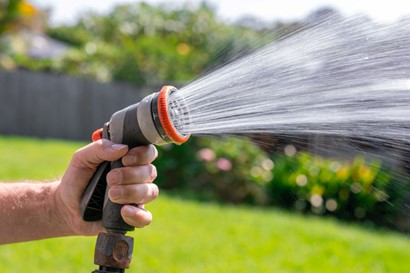Keeping your lawn lush and green requires more than just regular mowing and fertilizing. Proper watering is a crucial aspect of lawn care that often gets overlooked. At Lawn Squad, we believe that understanding the best watering practices can make all the difference in maintaining a beautiful and healthy lawn. Here are some essential tips and habits to help you water your lawn effectively.
1. Water Early in the Morning
The best time to water your lawn is early in the morning, between 6 AM and 10 AM. During these hours, temperatures are cooler, and the wind is usually calmer, allowing water to soak into the soil rather than evaporate. Watering in the evening or at night can lead to prolonged moisture on the grass blades, increasing the risk of fungal diseases.
2. Water Deeply and Infrequently
Instead of watering your lawn every day, aim for deep, infrequent watering sessions. This encourages the grass roots to grow deeper into the soil, making your lawn more drought-resistant. A good rule of thumb is to water your lawn so that it receives about 1 to 1.5 inches of water per week, including rainfall. You can measure this by placing a rain gauge or a small container in your yard while you water.
3. Adjust Watering Based on Weather
Your lawn’s water needs will vary depending on the weather. During hot, dry spells, your lawn may require more frequent watering. Conversely, during cooler, rainy periods, you can reduce the watering frequency. Always keep an eye on the weather forecast and adjust your watering schedule accordingly.
4. Use the Right Sprinkler System
Choosing the right sprinkler system can greatly enhance the efficiency of your watering routine. Rotary sprinklers are ideal for large areas, while oscillating sprinklers work well for rectangular lawns. For smaller or oddly shaped areas, consider using a hand-held hose or a drip irrigation system to ensure even coverage without wasting water.
5. Check for Proper Drainage
Ensure your lawn has proper drainage to prevent waterlogging, which can lead to root rot and other issues. If you notice puddles forming in certain areas, you might need to aerate your lawn or improve the soil’s drainage capacity. Aeration helps loosen compacted soil, allowing water to penetrate more deeply and evenly.
6. Monitor Soil Moisture
Regularly check the moisture level of your soil to determine if your lawn needs watering. You can do this by sticking a screwdriver or a soil probe into the ground. If it goes in easily and comes out moist, your lawn has enough water. If it’s difficult to insert or comes out dry, it’s time to water.
7. Avoid Overwatering
Overwatering can be just as harmful as underwatering. It can lead to shallow root growth, making your lawn more susceptible to disease and drought. Signs of overwatering include a spongy feel underfoot, excessive weed growth, and fungal issues. Stick to the recommended watering schedule and adjust based on the needs of your lawn.
8. Consider Smart Irrigation Controllers
For a more efficient watering routine, consider investing in a smart irrigation controller. These devices can automatically adjust your watering schedule based on real-time weather data and soil moisture levels, ensuring your lawn gets the right amount of water at the right time.
By adopting these watering tips and habits, you can keep your lawn healthy, vibrant, and resilient throughout the year. At Lawn Squad, we’re here to help you achieve the lawn of your dreams. Contact us for professional lawn care services and personalized advice tailored to your lawn’s specific needs.
For more expert lawn care tips or to schedule a consultation, visit our website or call us today. Let’s work together to create the perfect lawn for your home!





